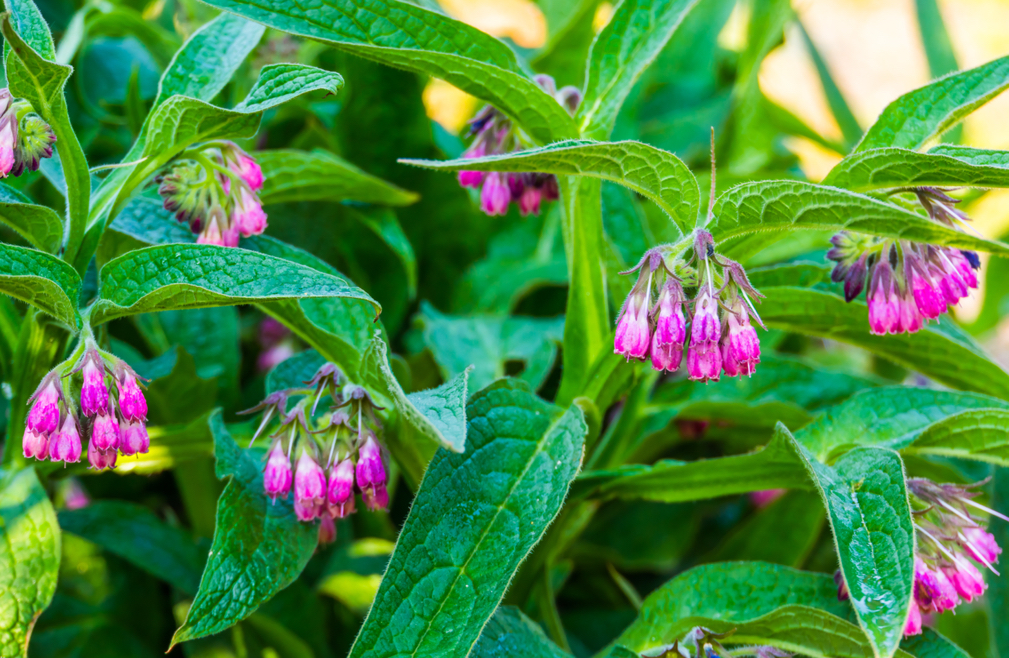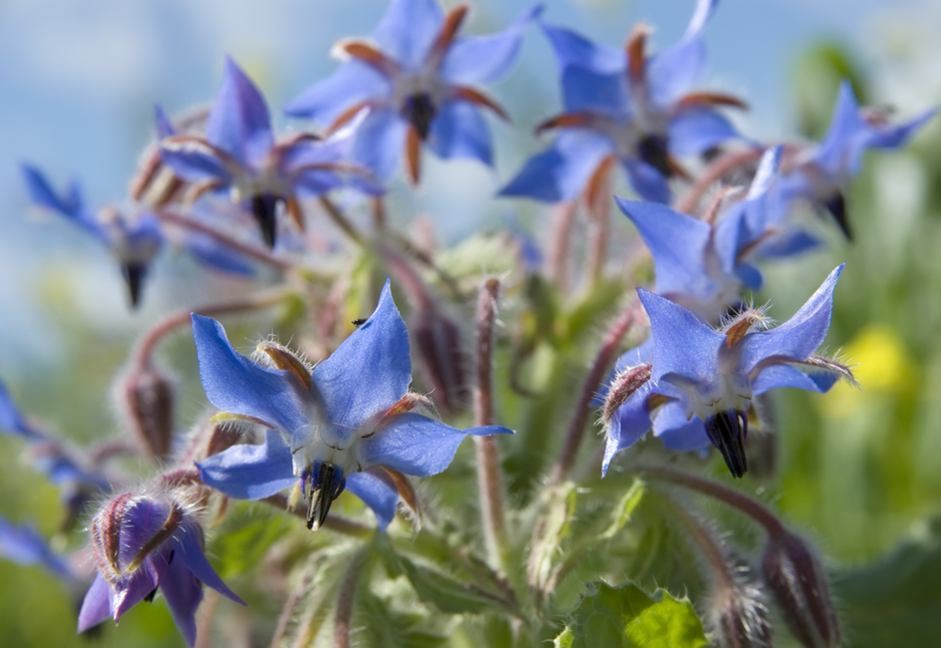Comfrey Vs Borage – What Are The Benefits Of Each In An Organic Garden?

PERENNIALS > COMFREY-VS-BORAGE

Elizabeth is a Permaculture Garden Designer, Sustainability Consultant and Professional Writer, working as an advocate for positive change. She graduated from the University of St. Andrews with an MA in English and Philosophy and obtained a Diploma in Applied Permaculture Design from the Permaculture Association.
Reviewed By DAN ORI

Dan has over 27 years’ under his belt caring for plants and gardens. Working as a Horticultural Instructor and Consultant, he draws on a diverse range of experience that includes working as a Head Gardener, Tree Surgeon, Garden Centre Trouble Shooter, and writer of academic papers. Dan has a Level 3 Diploma in Horticulture and is currently a candidate for the RHS’s most prestigious award – The Master of Horticulture.
IN THIS GUIDE
COMFREY GUIDES
Comfrey vs Borage
Fertiliser
– For Tomatoes
Growing From Seed
Harvesting
Root Cuttings
Varieties
Both comfrey (Symphytum ssp.) and borage (Borago officinalis) are members of the Boraginaceae plant family.1Family Album: Borage. (n.d.). Wild Flower Finder. Retrieved March 14, 2023, from https://wildflowerfinder.org.uk/Menu2/Family/FamilyInfo/Info_Boraginaceae.htm
Both are key plants for organic gardeners, bringing many benefits to a garden, and can be used in many ways.
In this article, I will explain some of the key differences and similarities between borage and comfrey and some of the ways you can use both in your garden.
Similarities
Some of the similarities include:
- Both plants have hairy leaves which can look fairly similar early in the season.
- Both are great nectary plants, which are great for bees and other pollinators, and other beneficial insects in your garden.
- Comfrey and borage can both be excellent companion plants in a food producing garden.
- Both plants are dynamic accumulators, which can make them useful for mulches, composting and liquid plant feeds.
Differences
There are some key differences between the two plants.

These are:
- Comfrey is a perennial and will come back each year, but borage is an annual, completing its lifecycle over a single year.
- Comfrey has white/pink-purple dangling tubular or bell-shaped flowers. Borage has purple/blue star-shaped flowers.
- Comfrey grows in almost any soil type, but prefers reasonably moist conditions in full sun or partial shade. Borage prefers more free-draining conditions in full sun or partial shade.
- Comfrey is H7 hardy whereas borage is H5 hardy.
- Comfrey grows 1-1.5m tall, with a similar spread. Borage is a somewhat smaller plant, growing around 0.5-1m tall, with a spread of 0.1-0.5m.
Using Comfrey In The Garden
Comfrey is commonly used in a garden as a companion plant in a forest garden or guild, or another perennial planting scheme.
It benefits fruit trees and other plants through dynamic accumulation, grass suppression, ground cover, and other plants and insect attraction for pollination and pest control.

Comfrey can be grown in a dedicated patch which is then mown and dropped to provide material for composting, mulching and liquid feeding.
It can also be used to form barriers around a certain growing area to prevent the ingress of grasses or weeds and to create a good ground cover.
Alternatively, comfrey can also act as an ornamental and structural plant in a mixed, informal, wildlife-friendly and low-maintenance perennial border, for its height and flowers.
Using Borage In The Garden
Borage is commonly used in a garden as a companion plant for most common annual kitchen garden crops, and as a ‘living mulch’ which can be chopped and dropped, or harvested and used for household purposes or fertility in the garden.
It can also be used as a self-seeder in forest gardens or perennial vegetable garden designs, or in herb gardens, alongside a range of other culinary herbs.

Borage would make a great addition to an informal annual flower bed or wildflower meadow area, as Horticulturist Dan Ori shares:
“Borage can be left after flowering if you want to encourage it to self-seed, unlike Comfrey, which you will most likely want to cut back after flowering to control the spread and encourage fresh-looking leaf growth.
“Borage is one of my favourite plants to attract pollinators into the garden, it is listed on the Royal Horticultural Society’s Plant for Pollinators list.”
So while comfrey and borage do have a lot in common, they are not always used in the same ways, but both can be great additions to your garden.
References
- 1Family Album: Borage. (n.d.). Wild Flower Finder. Retrieved March 14, 2023, from https://wildflowerfinder.org.uk/Menu2/Family/FamilyInfo/Info_Boraginaceae.htm
